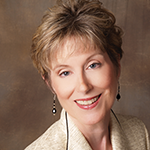Still, there’s more work to be done. Dr. Davis says the school is developing a diverse group of medical student coaches, which is no small feat, because she says minorities represent only roughly 7% of medical faculty in the U.S.
“This has to begin with faculty,” she says. “We’re the ones teaching this curriculum. There must be open dialogue and discussions about how we’re approaching the topics of cultural competency and teaching students about the biases that we all bring into the room.”
About four years ago, Brookshield Laurent, DO, vice chair of the Department of Clinical Medicine at the NY Institute of Technology (NYIT) College of Osteopathic Medicine, revamped the culture competency component of the department’s medical curriculum.
Similar to observing micro-aggression scenarios, students watch video vignettes of physician–patient encounters that reveal physician biases. For example, a male physician enters the exam room and offers to shake hands with the female patient and her husband, who may be from the Middle East. But due to cultural disparities, the physician must direct his remarks to the husband, not the wife. Classroom discussions then follow, with students debating whether or not the interaction distracted the physician from giving the patient appropriate care.
Students also complete a virtual medicine and simulation course in which they engage with mock patients from different backgrounds, ask related questions, build rapport and prescribe needed care. Some also volunteer to perform these same tasks in real life at the student-run clinic that caters to an underserved area that supports a diverse population.
At Massachusetts General Hospital (MGH) in Boston, trainees, physicians and the hospital’s leadership participate in a variety of diversity and inclusion training opportunities, says Sherri-Ann Burnett-Bowie, MD, director of multicultural affairs for MGH’s department of medicine, who has been involved with the hospital’s diversity efforts since 2010.
She says learning occurs during grand rounds, noontime conferences, two-hour workshops, two-hour executive retreats and reflective sessions, which have included a facilitated panel, addressing employee questions and were live streamed throughout the hospital’s network. Mentoring programs are ongoing and may soon be expanded.
Across Boundaries
At some medical schools, diversity is a school-wide topic discussed throughout the year by both faculty and students.
Dr. Laurent at NYIT says diversity is among the topics addressed during faculty development discussions and simulated trainings with students. Faculty also offers tips on how to strengthen this part of the curriculum.


